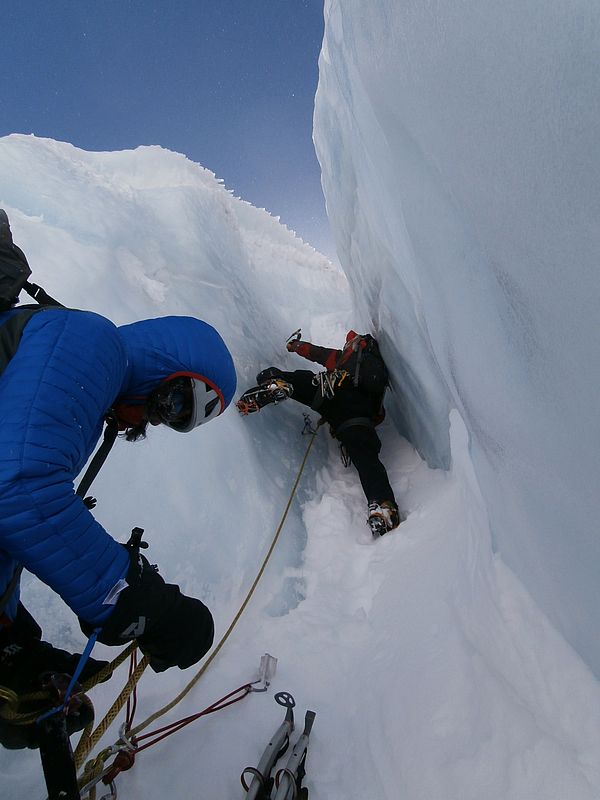Today, I was prepping a confirmation letter for my North Cascades climbing teams, part of which deals with training for climbing. As I feel it's perhaps a bit different from your normal “training for climbing” kinds of plans, I'm putting it out here, hoping it makes for a thought-provoking read. I welcome your thoughts and input...
Climbing in the mountains is challenging and very little in the modern day-to-day world prepares us for it. So, we must consciously create challenge in our daily life that will prepare ourselves for the mountain challenges. There are a wide variety of training platforms, programs, and plans, typically moderated by someone much more skilled, trained, and certified in athletic training than I am. But I do have experience both in climbing mountains and in working with people toward shared objectives in the mountains. With that in mind—and keeping in mind that I'm a sucker for catchphrases and quotes, these are the primary takeaways I've gleaned through those experiences:
More Time Doing, Less Time Researching: I've long held that “Reviewing recipes won't cook dinner and reading diet plans won't make you thinner.” Yes, a reasoned and informed approach to exercising is important, but don't let your review of all that info and the development of elaborate training plans get in the way of actually just getting out there and training. Plan on at least 3 midweek aerobic sessions (see below) of 1+ hours and one weekend session that includes 6+ hours of hiking with a weighted pack.
Practice Like You Play (Part 1): The more you can make your daily fitness resemble actual climbing, the better. This can be challenging for people in urban and/or flat areas—but I managed to successfully train for my first-ever Denali (West Rib) climb while living in DC. I spent zero time on an exercise bike and zero time on a stairmaster, as neither of these challenge the small balance muscles that are essential in walking over rough, incongruous terrain. Instead, I loaded up a pack with 80+ pounds (Denali packs are heavier—50 pounds is fine for the North Cascades) and I walked up and down the longest stairs I could find near me. On weekends, I went out to the Shenandoahs and did a longer hike with a similarly weighted pack (you'll make a great hiking companion to your less-fit friends!). And, while you should do some weightlifting/upper body work, if your schedule is limited, focus on aerobic.
Practice Like You Play (Part 2): Early on in my mountain guiding, I worked on Mt. Rainier—a popular “bucket list” climb for non-climbers (if you want to see my opinions on “bucket lists” check here). People showed up for pre-climb orientation wearing marathon t-shirts, apparently wishing to convey that they were in shape—and at first, that is how I interpreted it. Over time, I realized that a marathon shirt communicates one of two things, either:
- Thing #1: They actually ran a marathon, which means they did it in somewhere in the four hour zone. These folks were often great on the mountain...for the first four hours. Their marathon training didn't really prepare them well for the 12+ hour days typically called for in the mountains.
- Thing #2: They walked 26.2 miles over relatively flat and smooth terrain without a pack on. While this is commendable and certainly not something the average person can pull off, it doesn't resemble the kind of walking they'll be doing in the mountains.
Cry in The Dojo, Laugh in the Battlefield: When I head out to do a big experience in the mountains, I have a long list of things that are on my mind regarding doing so effectively and safely. The more “concern” boxes that I can have checked off the list at the trailhead, the better. I work to make sure that the fitness box is checked before my boots even go on, so that my bandwidth can instead focus on the many other important things to be concerned about and to focus on. Beyond safety, the more time I've put in in “The Dojo”, the better prepared I am to laugh in the mountains, to fully enjoy the beauty of the place and the comraderie along the way.
All that said, if you're looking for training and guidance with your fitness plan, Uphill Athlete and Mountain Athlete are two programs that I know many mountain climbers/guides have used. But enough reading about fitness for now—get out and get after it today!

